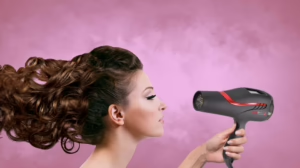DIY Haircare: How to Keep Your Locks Healthy for Any Hairstyle
Hair is often seen as our crowning glory, a reflection of our personality, style, and overall well-being. Modern-day hair care, influenced by trends and innovations, has made us more aware of how important it is to nurture our locks. This guide provides comprehensive insights into DIY haircare, focusing on approaches that yield effective results for any hairstyle. Here’s how to maintain healthy hair through simple, do-it-yourself methods.
Understanding Your Hair Type
Before embarking on any haircare regimen, it’s crucial to understand your hair type. The structure and porosity of your hair can influence the products and methods you should use. Hair types typically fall into the following categories:
- Straight: Lacks curl and tends to be oily.
- Wavy: Slightly textured with a natural wave.
- Curly: Defined curls that can range from loose to tight.
- Coily: Tightly spiraled hair, similar to an “S” shape.
Hair porosity also affects how well products penetrate your hair. There are three levels of porosity:
- Low porosity: Doesn’t easily absorb moisture.
- Normal porosity: Balances moisture effectively.
- High porosity: Absorbs moisture quickly but loses it just as fast.
Understanding your hair type and porosity will help you tailor your DIY haircare regimen effectively.
Essential Ingredients for DIY Haircare
Creating effective DIY haircare treatments begins with understanding key ingredients and their benefits. Below are some foundational elements often used in homemade hair care:
- Carrier Oils: These include coconut oil, olive oil, and jojoba oil. They provide moisture and nourishment.
- Essential Oils: Lavender, tea tree, and rosemary oils not only add fragrance but can also improve scalp health and stimulate hair growth.
- Aloe Vera: Known for its soothing properties, it can hydrate the scalp and help remove excess buildup.
- Honey: A natural humectant that can aid in moisture retention.
- Eggs: Rich in protein, they can enhance hair strength.
DIY Hair Masks for Various Needs
1. Moisturizing Mask
Ingredients:
- 1 ripe avocado
- 2 tablespoons honey
- 2 tablespoons olive oil
Instructions:
- Mash the avocado in a bowl until smooth.
- Mix in honey and olive oil.
- Apply the mask to damp hair, focusing on the mid-lengths and ends.
- Leave it on for 30-45 minutes before rinsing thoroughly.
2. Strengthening Mask
Ingredients:
- 2 eggs
- 2 tablespoons coconut oil
- 1 tablespoon honey
Instructions:
- Whisk the eggs until frothy.
- Mix in the coconut oil and honey.
- Apply to dry hair, ensuring it covers all strands.
- Leave for 30 minutes and wash it out with a gentle shampoo.
3. Scalp Treatment
Ingredients:
- 1/4 cup aloe vera gel
- 2 tablespoons tea tree oil
- 1 tablespoon olive oil
Instructions:
- Combine aloe vera and olive oil in a bowl.
- Mix in tea tree oil.
- Massage into the scalp and leave for 20 minutes before rinsing.
Daily Haircare Routine
A consistent daily routine can drastically improve the health of your hair. Here are some essential steps for maintaining healthy locks:
-
Gentle Cleansing: Use a sulfate-free shampoo to avoid stripping natural oils. Limit washing to 2-3 times a week, depending on your hair type. [^1]
-
Conditioning: Every time you wash your hair, follow up with a conditioner that matches your hair type. Consider a leave-in conditioner for additional hydration.
-
Avoid Heat Styling: Minimize the use of blow dryers, curling irons, and straighteners. If styling is necessary, use a heat protectant to prevent damage.
-
Regular Trims: Getting hair trimmed every 6-8 weeks can eliminate split ends and promote healthy growth. [^2]
-
Protective Styling: For curly or coily hair, consider protective styles like braids or buns to minimize manipulation and reduce breakage.
Natural Remedies for Hair Issues
Dandruff
Ingredients:
- 2 tablespoons apple cider vinegar
- 2 tablespoons water
Instructions:
- Mix apple cider vinegar with water.
- Apply to the scalp after washing hair.
- Leave for a few minutes before rinsing.
Hair Loss
Ingredients:
- 1/2 cup castor oil
- 1/4 cup coconut oil
- A few drops of rosemary essential oil
Instructions:
- Combine the oils in a bowl.
- Part hair and apply directly to the scalp, massaging gently.
- Leave overnight and wash out the next day.
Dryness
Ingredients:
- 1 banana
- 1 tablespoon honey
- 1 tablespoon olive oil
Instructions:
- Blend the banana until smooth.
- Mix in honey and olive oil.
- Apply to damp hair for 30 minutes before rinsing.
Nutritional Considerations for Healthy Hair
The health of your hair is not just dependent on external treatments but also on your nutrition. A balanced diet significantly influences the condition of your locks. Here are some nutrients crucial for hair health:
-
Protein: Hair is primarily made of a protein called keratin; therefore, consuming adequate protein is vital. Sources include eggs, fish, nuts, and legumes.
-
Omega-3 Fatty Acids: Found in fish, flaxseeds, and walnuts, these fats help nourish the skin and promote a healthy scalp.
-
Vitamins:
- Biotin: Essential for hair growth; sources include eggs, avocados, and nuts.
- Vitamin E: Acts as an antioxidant, improving circulation to the scalp; nuts and seeds are good sources.
-
Iron: A deficiency can lead to hair loss; sources include spinach, lentils, and red meat.
Managing Different Hairstyles
For Straight Hair
Straight hair often looks sleek but can be prone to oiliness. Use lightweight conditioners and avoid heavy creams that can weigh the hair down. Regular trims are essential to keep the look fresh.
For Wavy Hair
Wavy hair needs moisture to avoid frizz. Opt for hydrating shampoos and curl-enhancing creams. Scrunching products into your hair can amplify waves and add definition.
For Curly Hair
Curly locks require deep hydration. Use rich, creamy masks and avoid sulfates that can strip natural oils. Embrace your curls by using curl-defining gels and products that enhance texture.
For Coily Hair
Coily hair thrives on moisture and requires careful handling. Incorporate heavy oils and butters into your regimen. Protective styles help retain moisture and reduce breakage, allowing hair to grow.
Conclusion
Maintaining healthy hair is a journey rather than a destination. The rise of DIY hair care empowers individuals to take charge of their hair health in simple, economical ways. By understanding your hair type, utilizing effective DIY treatments, and committing to a holistic approach that includes nutrition, you can ensure your locks remain healthy and vibrant, regardless of the hairstyle you choose.
Incorporating these DIY techniques and natural remedies into your routine will not only enhance your hair’s appearance but also its overall health, making every style an expression of who you are.


























Add Comment